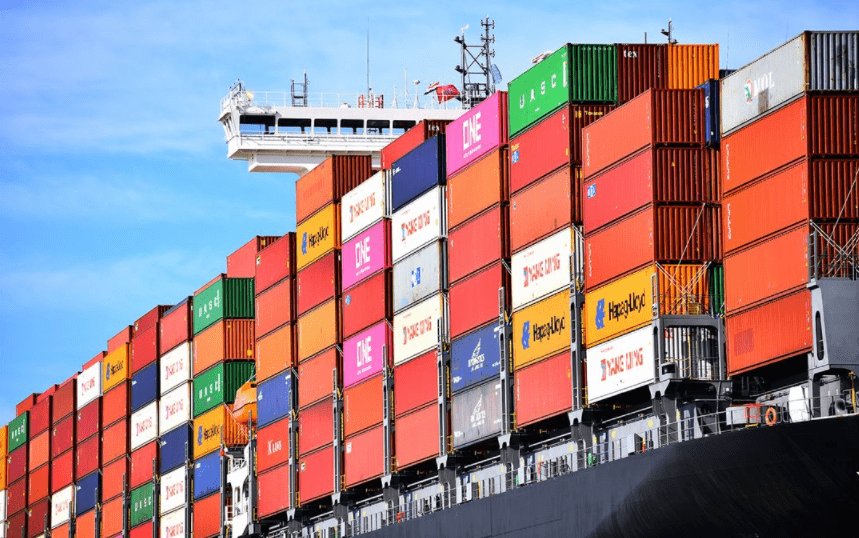
Havenbedrijf positief over aantrekkende overslag

Foto: Danny Cornelissen
De overslag in de Rotterdamse haven is in het eerste kwartaal met 3 procent gegroeid. Het Havenbedrijf Rotterdam ziet in de aantrekkende overslag een eerste stap van herstel.
Het afgelopen jaar viel de overslag 6,9 procent lager uit als gevolg van de coronacrisis. In het eerste kwartaal van 2021 lijkt met een overslag van 115,8 miljoen ton (+3,0) procent de weg naar boven weer te zijn ingezet.
Aantrekkende overslag
De meeste groei zat in de overslag van biomassa (+36,7 procent), kolen (+25,5 procent) en minerale olieproducten (+19,7 procent). Er was meer vraag naar biomassa doordat de Amer 9-centrale in Geertruidenberg haar bijstook opvoerde. De koude winter was verantwoordelijk voor de gestegen overslag van energiekolen en de overslag van olieproducten nam toe door meer aan- en afvoer van stookolie en gasolie.
Containers
De overslag van containers nam toe met 4,5 procent in TEU. Curieus genoeg nam de overslag gemeten in tonnen licht (-0,7 procent) af. Het havenbedrijf verklaart dit door een toename van het aantal lege containers en een gemiddeld lager gewicht per container.
Dalingen
Segmenten die het minder deden, zijn LNG (-26,8 procent), agribulk (-8,6 procent) en overig nat massagoed (-2,8 procent). Er wordt minder LNG ingevoerd vanwege de hoge prijzen in Azië, dat daardoor transport aantrekt. Het havenbedrijf schrijft de daling van agribulk toe aan de ruime voorraden. Binnen het segment overig nat massagoed daalden de overslag van plantaardig massagoed en chemie.
‘Positief beeld’
“Het toegenomen overslagvolume in het eerste kwartaal geeft over het geheel genomen een positief beeld”, zegt ceo Allard Castelein van het Havenbedrijf Rotterdam. “Voor ondernemingen in handel en logistiek blijven het evenwel turbulente tijden. De meest actuele uitdaging is de logistieke afhandeling na de Suez-stremming. Havenbedrijf Rotterdam zet daarbij alles op alles om zijn klanten bij te staan, bijvoorbeeld met een real-time overzicht van aankomsttijden op alle deepsea terminals.”
Zie ook: Havenoverslag terug naar niveau van 2011
English translation
Port Authority positive about increasing throughput
The volume of freight handled in the port of Rotterdam increased by 3 percent in the first quarter. The Port of Rotterdam Authority sees this as a first step towards recovery.
Last year, the throughput fell by 6.9 percent as a result of the corona crisis. In the first quarter of 2021, with a throughput of 115.8 million tonnes (+3.0) percent, the road to the top seems to have been set.
Cold winter
Most growth was in the throughput of biomass (+36.7 percent), coal (+25.5 percent) and mineral oil products (+19.7 percent). The demand for biomass increased because the Amer 9 power station in Geertruidenberg increased its co-firing. The cold winter was responsible for increased throughput of energy coal, and throughput of oil products increased because of more incoming and outgoing fuel oil and gas oil.
Containers
The handling of containers increased by 4.5% in TEU. Curiously, the throughput measured in tons decreased slightly (-0.7 percent). The Port Authority explains this by an increase in the number of empty containers and a lower average weight per container.
Less LNG
Segments that did less are LNG (-26.8 percent), agribulk (-8.6 percent) and other wet bulk (-2.8 percent). Less LNG is being imported because of the high prices in Asia, which are attracting transport. The Port Authority attributes the decrease in agribulk to the large stocks. Within the other wet bulk segment, the throughput of vegetable bulk and chemicals declined.
‘A positive picture’
“Generally speaking, the increased throughput volume in the first quarter paints a positive picture”, says CEO Allard Castelein of the Port of Rotterdam Authority. “Nevertheless, these remain turbulent times for companies working in trade and logistics. At this point, the main challenge we are set before is handling the aftermath of the Suez blockage in terms of logistics. The Port of Rotterdam Authority is doing its utmost to support its clients – among other things by offering real-time surveys of ETAs at all the port’s deep sea terminals.”









